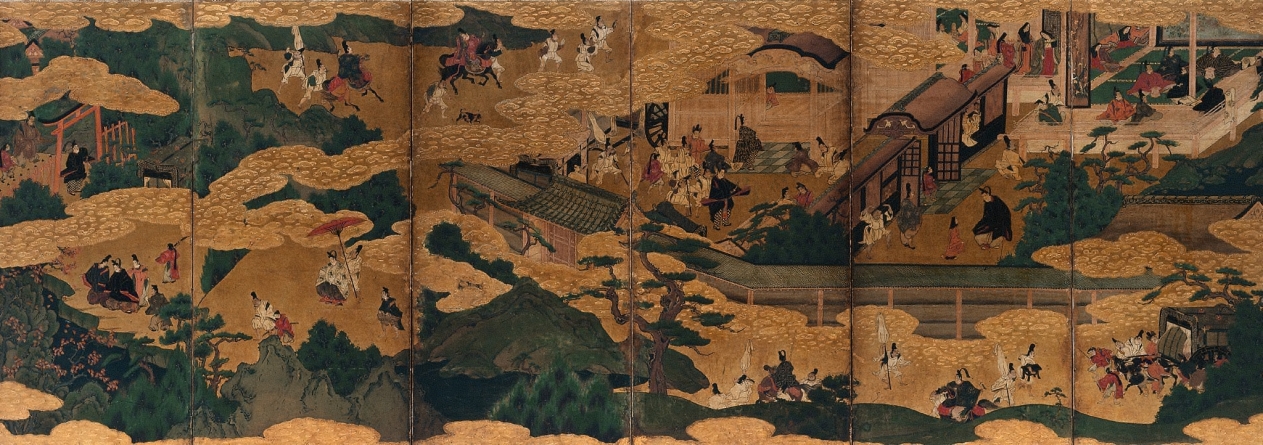| schema:description 9 | "collection: ASIAN - Folding screen" |
| schema:description | "tombstone: Scenes from the "Tales of Ise", mid-1600s. Japan, Matabei School, Edo period (1615-1868). One of a pair of six-panel folding screens; ink, color and gold on paper; image: 95.2 x 267 cm (37 1/2 x 105 1/8 in.); overall: 109.3 x 258.9 cm (43 1/16 x 101 15/16 in.); closed: 109.3 x 48.5 x 11 cm (43 1/16 x 19 1/8 x 4 5/16 in.). The Cleveland Museum of Art, John L. Severance Fund 1969.127.1...(more)" |
| schema:description | "id: 144293" |
| schema:description | "creditline: John L. Severance Fund" |
| schema:description | "wall_description: While the 11th-century <em>Tale of Genji</em> is universally regarded as Japan's literary masterpiece, the source for visual imagery in Japanese culture is rivaled by another literary classic, the <em>Tales of Ise</em>. A 10th-century anthology of poems interspersed with commentary, the Ise portrays the emotional and geographical journey of a courtier from the capital (Kyoto) into the countryside and beyond. The poems describe features of the natural, untamed terrain, linking them to the rather melancholy state of the traveler. <br><br>Since the <em>Tales of Ise </em>was—and remains today—well read by educated Japanese, a person viewing these folding screens would immediately recognize its subject, organized as a series of discrete scenes read from right to left. Neither a signature nor a seal identifies the artist, but judging from related paintings, the work can be ascribed to an artist working in Kyoto during the first quarter of the 17th century in the manner of the painter Iwasa Matabei (1578–1650). This type of historical narrative composition became quite popular around 1600 among patrons favoring a distinctly Japanese style of painting which employed rich mineral pigments and a liberal use of gold....(more)" |
| schema:description | "type: Painting" |
| schema:description | "measurements: Image: 95.2 x 267 cm (37 1/2 x 105 1/8 in.); Overall: 109.3 x 258.9 cm (43 1/16 x 101 15/16 in.); Closed: 109.3 x 48.5 x 11 cm (43 1/16 x 19 1/8 x 4 5/16 in.)...(more)" |
| schema:description | "technique: One of a pair of six-panel folding screens; ink, color and gold on paper" |
| schema:description | "culture: Japan, Matabei School, Edo period (1615-1868)" |

